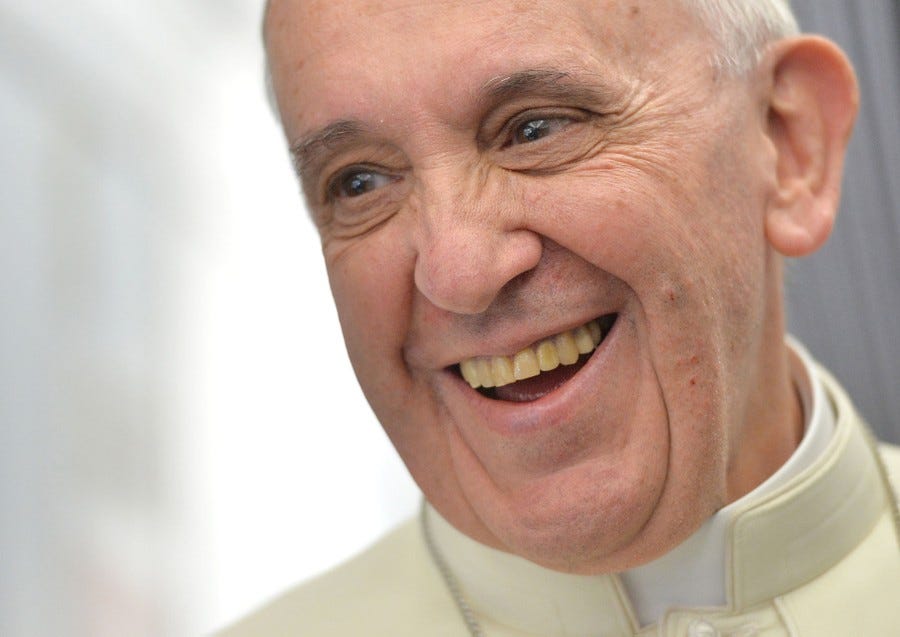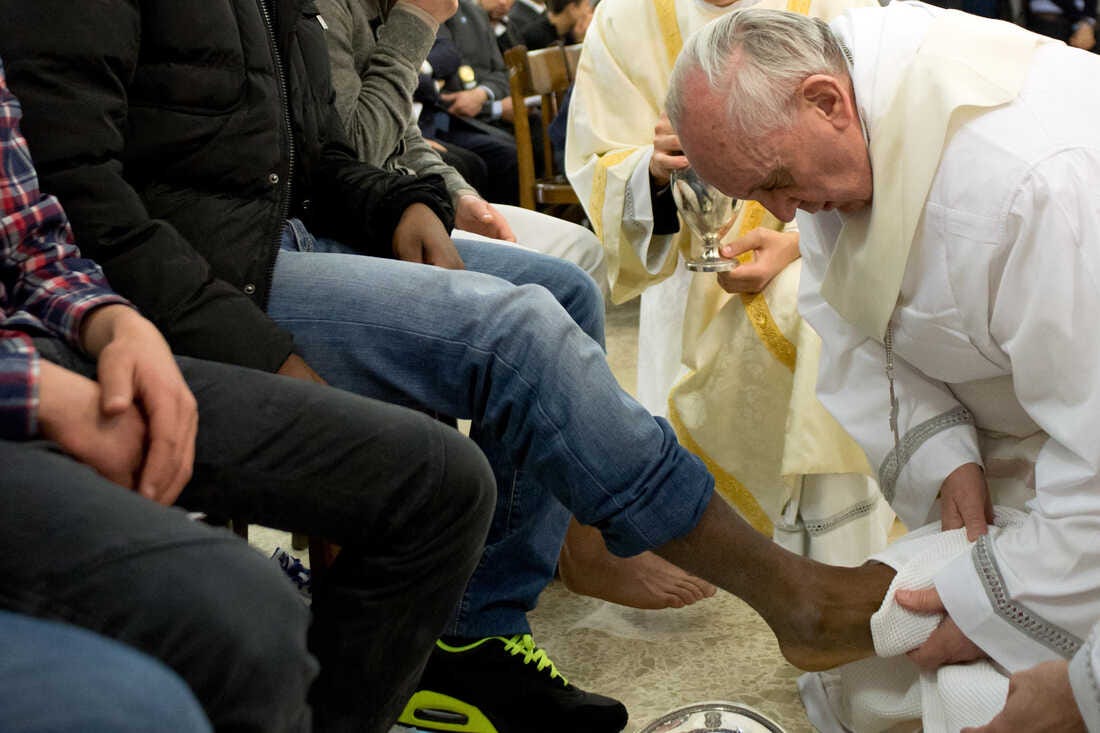Healing a Broken World, Pope Francis and His Saintly Namesake
On the evening of March 13, 2013, I, like millions of Catholics worldwide, took a deep breath as the moment arrived. The presentation of the new Pope was imminent.
The white smoke emanating near the Sistine Chapel had signaled to the world that the College of Cardinals had met their providential duty in Conclave and selected a new Pope—Habemus Papam—and a new priest had been selected as the 265th spiritual leader of the world's largest and oldest Christian denomination—the vicar of Christ. A meek older man emerged on the Vatican’s balcony dressed plainly in white. The enormity of the moment shone on his face as he shouldered the weight, history, and responsibility of the Catholic world.
“He’s a humble man,” I remember whispering to myself. Never had I seen humility in the face of a man the way I saw it that night.
Humility and poverty would prove to be the defining power of the pontificate of Jorge Bergoglio, a man who came to the Church and humanity at a time when he was desperately needed. A time when Christianity doesn’t seem very…well, Christian.
When Cardinal Jorge Mario Bergoglio chose the name Francis upon his election as pope in 2013, it signaled a profound connection to St. Francis of Assisi, the 13th-century saint renowned for his radical commitment to poverty, peace, and the renewal of the Church. This choice was not merely symbolic but represented a deliberate alignment with the Franciscan mission of healing and rebuilding a broken institution, a mission that resonates deeply with contemporary challenges. Both figures emerged during periods of significant ecclesiastical corruption and societal inequality, and both responded to a divine call to “repair my Church,” a call that fundamentally transformed their lives and, through them, the spiritual landscape of their times.
St. Francis of Assisi’s spiritual journey began with a mystical experience in the dilapidated chapel of San Damiano, where he heard Christ speak from the crucifix: “Francis, go repair my house, which, as you see, is falling into ruins.” Initially, Francis interpreted this literally, physically rebuilding the crumbling chapel with his own hands. Only later did he realize the deeper meaning, that he was called to reform the spiritual foundations of the Church itself, which had grown distant from its evangelical roots and the poor whom Christ had blessed.
Similarly, Pope Francis assumed leadership at a critical juncture when the Catholic Church faced crises of credibility due to financial scandals, clerical abuse revelations, and institutional rigidity. From the beginning of his papacy, he expressed his vision for “a poor Church, for the poor,” echoing his namesake’s commitment to radical simplicity. Like St. Francis, Pope Francis understood the need to rebuild not just the administrative structures, but to renew the Church’s spiritual essence by returning to the Gospel’s fundamental message of mercy, inclusivity, and preferential concern for the marginalized.
For St. Francis, healing the Church meant embodying Christ’s love for the outcast. His embrace of a leper, historically documented as a transformative moment in his conversion, symbolized his commitment to reaching those society had rejected. This radical solidarity extended to all creation, reflected in his famous “Canticle of the Creatures,” which recognized the divine presence in every aspect of the natural world and the intrinsic connection between caring for the poor and caring for the earth.
Pope Francis has similarly emphasized the Church’s obligation to the margins of society. His first apostolic journey outside Rome was to Lampedusa, where he mourned the deaths of migrants and condemned the “globalization of indifference.” His encyclical “Laudato Si’” expanded the Church’s social teaching to include environmental stewardship as integral to human dignity, explicitly linking ecological devastation to social injustice, a connection St. Francis intuited eight centuries earlier. In both figures, we see a recognition that addressing human brokenness requires addressing systems that perpetuate suffering.
Perhaps most visibly, both Francis figures challenged the institutional Church through their embrace of personal simplicity. St. Francis renounced his wealthy merchant father’s inheritance in a dramatic public disrobing, choosing to live in absolute poverty. This witness against the materialism of his age, including within the Church hierarchy, became his most powerful sermon. His followers’ simple lifestyle stood in stark contrast to the opulence of many religious leaders of the time.
Pope Francis has similarly rejected many of the traditional papal trappings, choosing simple vestments, residing in the Vatican guesthouse rather than the Apostolic Palace, carrying his own luggage, and driving in modest vehicles. These gestures, while symbolic, communicated a substantive critique of clericalism and institutional privilege. His repeated calls for a Church that “goes forth” rather than remains self-referential echo St. Francis’s pioneering spirit of bringing faith beyond monastery walls into the streets and fields where ordinary people lived.
Both figures emerged during eras of profound social division. St. Francis lived during the violent conflicts between emerging city-states and feudal powers, while sectarian tensions threatened religious unity. His peace-making efforts, exemplified in his famous journey to meet the Sultan during the Fifth Crusade, demonstrated his commitment to dialogue across seemingly insurmountable differences.
Pope Francis similarly confronts a world and Church fractured by polarization. His emphasis on synodality, creating spaces for listening and dialogue, represents an attempt to heal these divisions through encounter rather than decree. Like his namesake, he reached across traditional boundaries, engaging with religious leaders across faiths, meeting with LGBTQ+ Catholics, and encouraging dialogue with those traditionally marginalized within Church structures.
At the heart of both Francis figures’ missions lay a profound insight: institutional renewal cannot be separated from personal conversion. St. Francis’s stigmata, the wounds of Christ miraculously appearing on his body, symbolized his complete identification with the suffering Christ. This identification enabled him to see the divine presence in all human brokenness and to approach even the most wounded souls with reverence.
Pope Francis similarly emphasized the Church as a “field hospital” for wounded souls rather than a fortress of doctrinal purity. His oft-quoted question, “Who am I to judge?” reflects a pastoral approach that prioritizes accompaniment over condemnation. His emphasis on mercy as the Church’s “first attribute” aligns with St. Francis’s intuitive understanding that healing begins with compassion rather than judgment.
In both figures, we witnessed a profound paradox: the path to healing a broken Church, world, and human spirit comes not through power but through vulnerability, the vulnerability to be transformed by encounter with those who suffer. It was this willingness to enter into the wounds of their times, rather than remain distant from them, that made both Francis figures powerful agents of renewal and healing.






In a recent interview, Zach Lambert, author of the Public Theology Substack, spoke of the concepts of bound set versus center set communities. As Zach explained it, the majority of churches and denominations operate as bound set communities. Bound set communities are defined by boundaries; primarily around belief, but often around behavior too. You’re either inside the boundaries or you’re not. The more rigid the boundaries, the more closely they tend to be policed. In a nutshell, it’s about defining who’s in and who’s out based on a checklist.
In the center set model, there’s a central point that everyone in the community orbits arounds. For the community that Zach has built, that center is a focus on living out the way of Jesus and trusting in His finished work–His incarnation, life, death, and resurrection. Zach beautifully describes it in a metaphor – Imagine the planets orbiting the sun. In a center set community, Jesus is the sun. Some people are closer, some are farther away. At times, your orbit might bring you nearer or farther. Sometimes you’re traveling alongside others in the community, and sometimes it feels like you’re on your own. But if you’re in orbit–if you’re oriented toward the center–you’re part of the larger story we’re living out together.
Despite working within the bound set community that is the Catholic Church, Pope Francis, for me, has always aspired toward the spirit of a center set community, by his willingness to reach out to those in need of basic human understanding, love and support, regardless of their place inside or outside of the bounds of the community he represented. He will be missed.
Such an eloquent and informative post on the passing of this uncommon leader! His rest is well earned